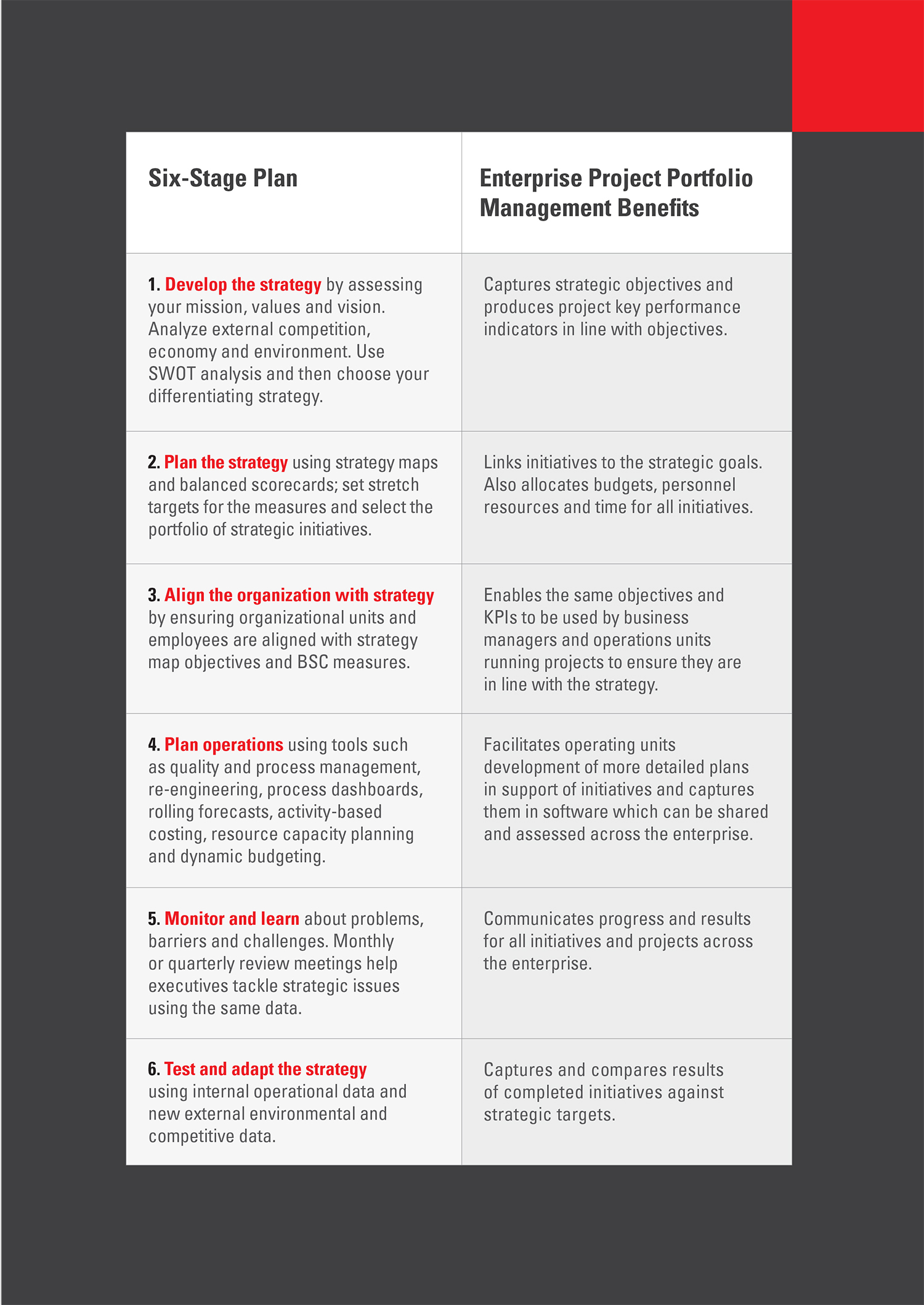Successful Strategy Execution requires disciplined Project Portfolio Management
If you don’t know where you are, you don’t have much hope of arriving at your planned destination. C-suite executives and senior management understand this only too well when they tackle their number one problem: executing on strategy.
Assuming you have a strategy, then you have located your destination for now, but how will you know if you are getting there? How will you know when you’re being blown off course and when you’re making steady progress?
The answer lies in being able to measure company performance against strategic objectives. As financial services firms create programs, projects or initiatives to accomplish a strategic goal, they must be able to monitor and measure those activities as well as their influence over a selection of general business metrics to figure out if they need to adjust the course of action.
Far from being a role reserved for operational and project management staff, monitoring initiatives is an essential strategic process and should happen at an enterprise level, says Robert Kaplan, a professor at Harvard Business School. As an author of dozens of books and more than 125 published papers addressing performance management, Kaplan has won international acclaim from professional and academic groups.
Monitoring projects should be integral with monitoring strategic progress, he says. “You don’t have a different system where you are saying ‘Here’s where we implement the strategy’. The strategy is implemented by employees doing their jobs; implementing strategic initiatives is always operational.”
“The only thing you do day-to-day is operations. Nobody does strategy day-to-day. The key question is, are the operations and the projects you’re doing on a day-by-day basis linked to strategic objectives?”
Fathers of the Balanced Scorecard
Professor Kaplan’s interest in linking strategy with execution came through his joint development of the balanced scorecard (BSC), a performance management tool which has been widely adopted across corporations and government.
The balanced scorecard was developed from his work in designing measures of performance beyond purely financial or budgetary. These additional measures might include customer relationships, employee performance and product quality. The BSC tool could be used to measure all sorts of projects and activities so Drs. Kaplan and Norton quizzed chief executives on what was most important to measure.
“The answer that came back was strategy. Senior executives wanted to know how they align their performance measurements with strategy. We realized that the BSC could now solve a bigger problem than the one we set out to solve. Most companies fail in strategy execution. More than 80% of companies fall short of achieving the targets in their five year strategic plans. The executives knew this. They taught us that the BSC could be used to describe and implement their strategy with a much higher likelihood of success.”
Linking Strategy to Execution with a Six Stage System
Professor Kaplan and his co-author Dr David Norton, consultant and founder of the Palladium Group, have developed a six-stage method for linking strategy to execution which they say helps businesses get to where they plan to go.
“Our system aligns strategic initiatives to strategic objectives. This alignment makes project management, which can seem very operational and tactical, actually very strategic. These projects create and deliver new strategic capabilities for the organization,” Professor Kaplan says.
“Without this approach the organization says ‘here is our strategy, here is our five year plan, here are 30 initiatives we’re doing over the next five years’, and they manage each of these projects in isolation with 30 different project-tracking systems. That does not look very strategic. And it is not.”

Putting Projects at the Heart of Strategy
The balanced scorecard can measure more than project alignment with strategy. It contains companywide measures, both financial and intangible, and non-financial measures such as customer satisfaction. By linking project portfolio management to the balanced scorecard strategic measures, employees can see how the projects help achieve wider strategic goals.
Applying project portfolio management and the balanced scorecard means projects can be justified by criteria other than just financial return, Professor Kaplan says. “You could have a project to improve customer loyalty and that is a justification in its own right. You could say, ‘We think it is going to increase retention by 20 percent, or it could be a project to speed up product development. Those improvements could be critical to the strategy.’
“Projects can get justified on improving a balanced scorecard metric which according to our theory of strategy is one of the links in driving the breakthrough in performance.”
Without such a feedback mechanism, projects may look great on financial measures, but have nothing to do with strategy. “When you evaluate the project, and ask ‘Was it on time? Was it on budget? Yes? That’s great, the project was a success.’ Well it may not be successful if it did not deliver the outcome that you wanted in that project: a reduction in cycle time or dramatic improvement in on-time performance.”
A Team for Strategy
But whatever strategy you choose and however it is measured, someone still needs to take responsibility for ensuring business leaders have the information and routines in place to keep it on track. If not there is a risk strategy can drift, and be seen as a one-off activity.
“You need a small cadre of staff whose only job is to help the organization implement strategy,” Professor Kaplan says.
This “office of strategy management” could be only a handful of people whose only job is to keep the strategy execution system functioning so it does not fall into disuse and decay.
Meanwhile, a corporate structure also needs to be reflected in how the progress of the strategy is measured. It helps to organize the strategy map and resulting projects into a small group of strategic themes. A theme might be operational excellence or learning and creating a high performance culture. Each department or unit might have a different way of interpreting themes that is appropriate for their market or function, in the end they come together.
No longer do businesses have to set a bearing for their desired destination and hope they remain on course. By combining Kaplan and Norton’s six-stage system for strategy planning and execution with software tools that allow the executive team to track its portfolio of projects against the strategy, business leaders now have the tools to know where they are at every point in the journey. Using them wisely can overcome challenges along the way and make the strategy a success.











